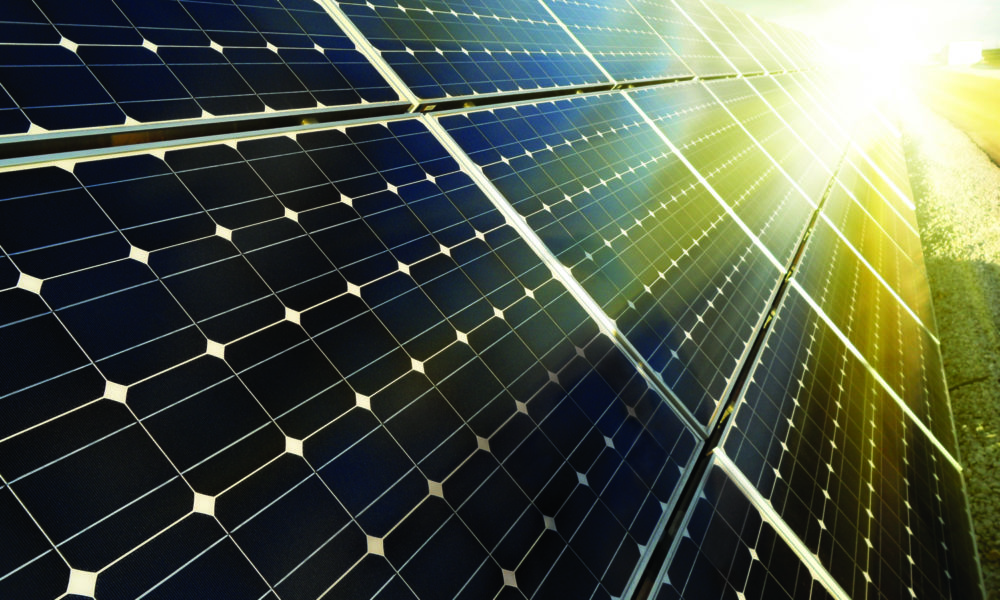There’s good news in the latest near-term electricity prognostications from the US government: Renewable energy, the projections suggest, will account for 80% of the generating capacity to be installed in the country this year, with both solar and wind looking set to have record years. And that’s all setting us up to pass yet another exciting clean energy milestone, about renewable energy’s contribution to our nation’s electricity supply.
What’s getting built: solar, wind, and more
The new data are from the Short-Term Energy Outlook (STEO) from the US Department of Energy’s Energy Information Administration (EIA). The EIA draws on what power plant developers have said they think they’re going to be building/installing this year (and next), and then adds in projections for small-scale systems (less than 1 megawatt), which don’t otherwise get captured in the national numbers (and, until recently, didn’t get included at all).

Here’s what the EIA data say:
- Wind – According to EIA, “[o]perators have scheduled 18.5 GW [gigawatts, or 1,000 megawatts] of wind capacity to come online in 2020.” Whether the industry fully reaches those stratospheric heights (some projects may get bumped into 2021), it does look as though new wind in 2020 will be a sizable step above the industry’s record to date for annual installations, which was 13.2 GW (in 2012).
- Solar – EIA’s solar numbers have caused a little confusion in some of the news coverage of these new numbers. EIA says it expects 13.5 new GW of solar in 2020… but then later says that it expects “an additional 5.1 GW of small-scale solar PV capacity” by the end of the year. That first number is the one that garnered headlines, but it represents just the large-scale portion of solar’s progress. Add the two pieces together, and projected solar is right up there with projected wind. And, as with wind, that 18+ GW of solar would be a new record, up from the 15 GW installed in 2016.
- Other renewables – While wind and (large-scale) solar dominate the headlines, it’s worth considering what’s going on elsewhere in the renewables space. EIA doesn’t break this out in their communications on the new findings, but the data suggest that another 0.4 GW of hydroelectric capacity might come online this year, along with a smidgen of geothermal and biomass.
- Natural gas – And then there’s the fossil fuel piece, which EIA says in 2020 will be natural gas (no coal, no oil), to the tune of 9.3 GW.
And here’s how those generating capacity numbers look:

The pie chart in particular makes clear that 80% number, for the portion of new generating capacity that EIA projects will be based on renewable energy.
Millions more household equivalents
Here are a few other ways to think about the 2020 additions:
- The new wind power would represent a 17% increase in US wind capacity, according to EIA’s figures. The new turbines would be enough capacity to generate the equivalent of an additional 6-7 million US households’ electricity use—meaning the electricity needs of the equivalent of that many million households are no longer being powered by fossil fuels.
- For solar, the new capacity would be a 22% increase (for small-scale) and a 36% increase (large-scale), for a 30% increase overall. The small-scale installations would be almost 50% more than we’ve seen in each of the last few years. And that new solar in total would be enough to generate another few million US household equivalents.
- In terms of what all those new solar arrays and wind farms will be churning out: In 2020, even as that new capacity is coming online, EIA projects, US renewable energy generation will be 11% higher than it was in 2019, based largely on wind power generating 15% more, and solar generating 24% more.

EIA’s projections for new electric capacity also, by the way, include energy storage (generally, these days, meaning batteries)—not generation, but still really important. As with the “other renewables” category, it’s not broken out; but it looks to be around 0.3 GW. If, as with solar, that includes only the big systems, that looks to be a big step up from what got installed in 2019.
To 20%—and beyond!
One other interesting outcome if (when) these projections come true: With small-scale solar included (as it indeed should be), EIA’s numbers suggest that total renewable energy generation will pass the 20% mark this year. That is, that more than a fifth of US electricity generation in 2020 will be from renewables—double the fraction they provided in 2010.
So watch for us to whiz right by another of the clean energy milestones I’ve been watching out for.
Better yet, don’t just watch. Some of the increase in renewable energy is being driven by a rush to beat the disappearance of key federal tax credits; those tax credits don’t have to disappear. And some policies at the regional level are tilting the playing field sharply away from renewables; that’s just wrong. Local and state policies are other important drivers.
Clean energy momentum is something we should all want to see build, and accelerate. That means taking advantage of the myriad opportunities to speak up for continued progress on renewables, at the local, state, and federal level. (And, while we’re at it, to fight for science to keep its rightful place in our democracy.)
As the latest US government figures show, we’ve definitely got momentum. Let’s keep it going.

